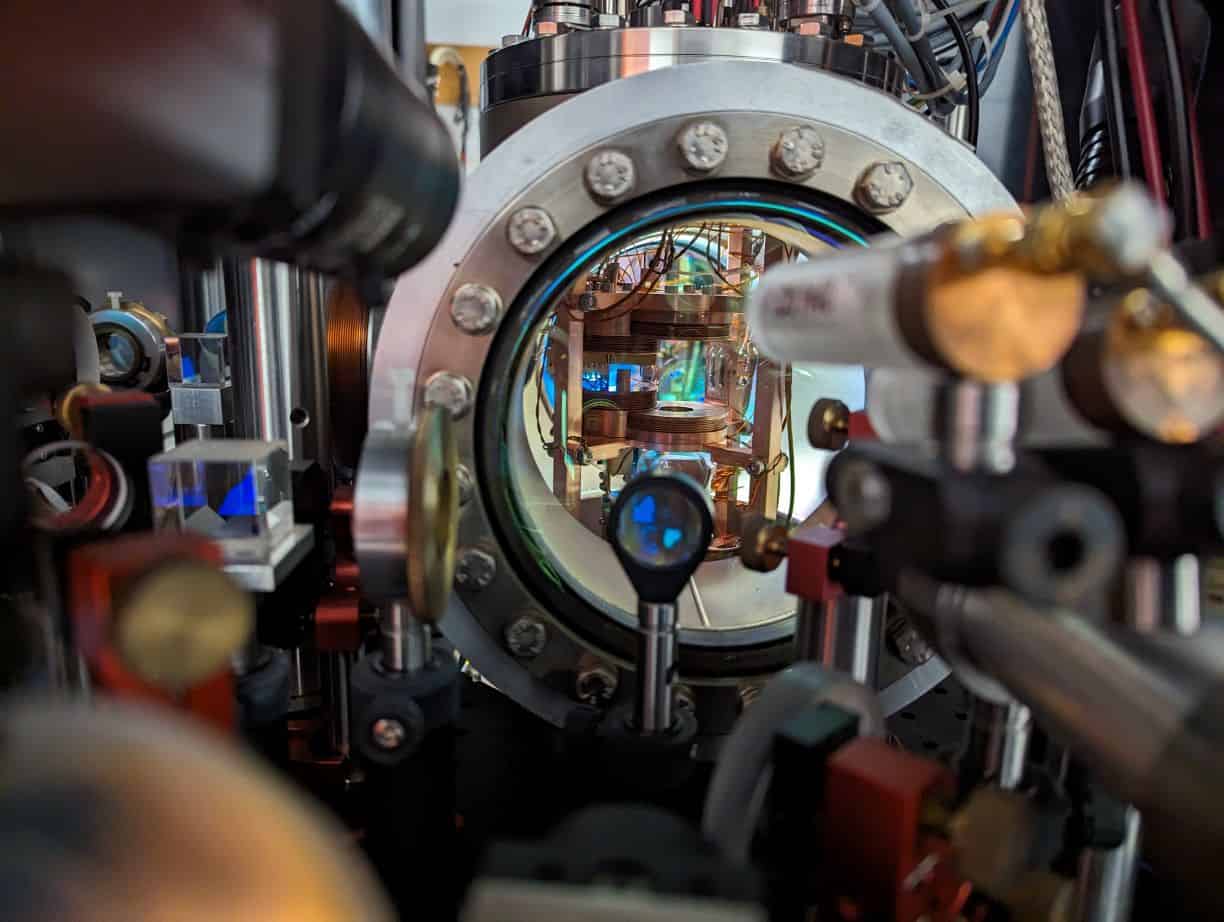Insight into the vacuum chamber housing the rubidium magneto-optical trap (MOT) of the Tübingen group is provided in this image. The frequency of the MOT lasers is regulated by a reinforcement learning agent. (Image courtesy of Malte Reinschmidt)
Cold atoms offer innovative solutions in the realm of quantum technology. Whether constructing a quantum computer using an array of ultracold atoms, implementing a quantum repeater for secure communication networks, or developing a quantum simulator for intricate condensed-matter problems, cold atoms prove to be versatile.
However, the complexity of these endeavors necessitates a significant experimental setup, comparable to the requirements for two Nobel Prizes. Moreover, even minor disturbances such as fluctuations in laboratory temperature, stray magnetic fields (which also serve as excellent quantum magnetometers), or abrupt movements like a slammed door, can disrupt the intricate systems of lasers, optics, magnetic coils, and electronics crucial for cold-atom physics.
To address these challenges, cold-atom physicists are exploring the integration of machine learning into their experiments. For instance, in 2018, researchers at the Australian National University developed a machine-optimized procedure for loading atoms into magneto-optical traps (MOTs) that serve as the foundation for cold-atom experiments. Subsequently, in 2019, a team at RIKEN in Japan applied a similar approach to enhance the cooling process, utilizing machine learning to discover novel and effective cooling methods for atoms approaching temperatures slightly above absolute zero, leading to the formation of a Bose-Einstein condensate (BEC).
Machine Learning in Action
In the latest advancement, two distinct groups of physicists have demonstrated that reinforcement learning, a form of machine learning, can assist cold-atom systems in managing disruptions.
Nick Milson, a doctoral student at the University of Alberta, Canada, leading one of the projects, explains the necessity for machine learning in their experiments. Due to the system’s instability in producing BECs of satisfactory quality for only a limited duration each day, manual optimization proved to be a formidable task. By employing reinforcement learning, the physicists aimed to create a consistent and responsive controller to address these challenges effectively.
Unlike conventional machine learning techniques that rely on labeled or unlabeled input data for predictive purposes, reinforcement learning focuses on refining processes by reinforcing positive outcomes and penalizing negative ones.
In their research, Milson and his team empowered an RL agent, an actor-critic neural network, to adjust 30 parameters within their apparatus for generating BECs of rubidium atoms. The RL agent was also provided with 30 environmental parameters sensed during the preceding BEC creation cycle. Through training the RL agent on data from previous experimental runs, the Alberta physicists observed that the RL-guided controller consistently outperformed human operators in loading rubidium atoms into a magnetic trap.
Incremental Progress
In a separate study, physicists led by Valentin Volchkov from the Max Planck Institute for Intelligent Systems and the University of Tübingen, Germany, along with his colleague Andreas Günther, adopted a different approach. Instead of optimizing numerous experimental parameters, they focused on two critical variables: the magnetic field gradient of the MOT and the laser light frequency utilized for cooling and trapping rubidium atoms.
The Tübingen team allowed their RL agent to adjust parameters over 25 sequential time steps during a 1.5-second MOT loading cycle, rewarding it for approaching the desired value of N/T – the ratio of the number of atoms N to the temperature T – as closely as possible by the cycle’s end, as determined through fluorescence imaging.
Although the RL agent did not propose novel cooling strategies for atoms within the MOT, it notably enhanced the robustness of the experimental setup. Volchkov emphasizes the significance of these automatic adjustments for the development of portable quantum devices that do not require constant human supervision.
Potential Applications and Future Prospects
Both Milson and Volchkov express optimism regarding the broad applications of machine learning in atomic physics, ranging from optimizing atom loading in optical tweezers to designing protocols for quantum memory. They believe that machine learning is well-suited to address the intricate scenarios prevalent in atomic and quantum physics.
The research by the Alberta team has been published in Machine Learning: Science and Technology, while the Tübingen team’s work is available as an arXiv preprint.
- Correction Notice: This article was updated on 31 January 2024 to provide clarity on Valentin Volchkov’s affiliations and details of the Tübingen experiment.










